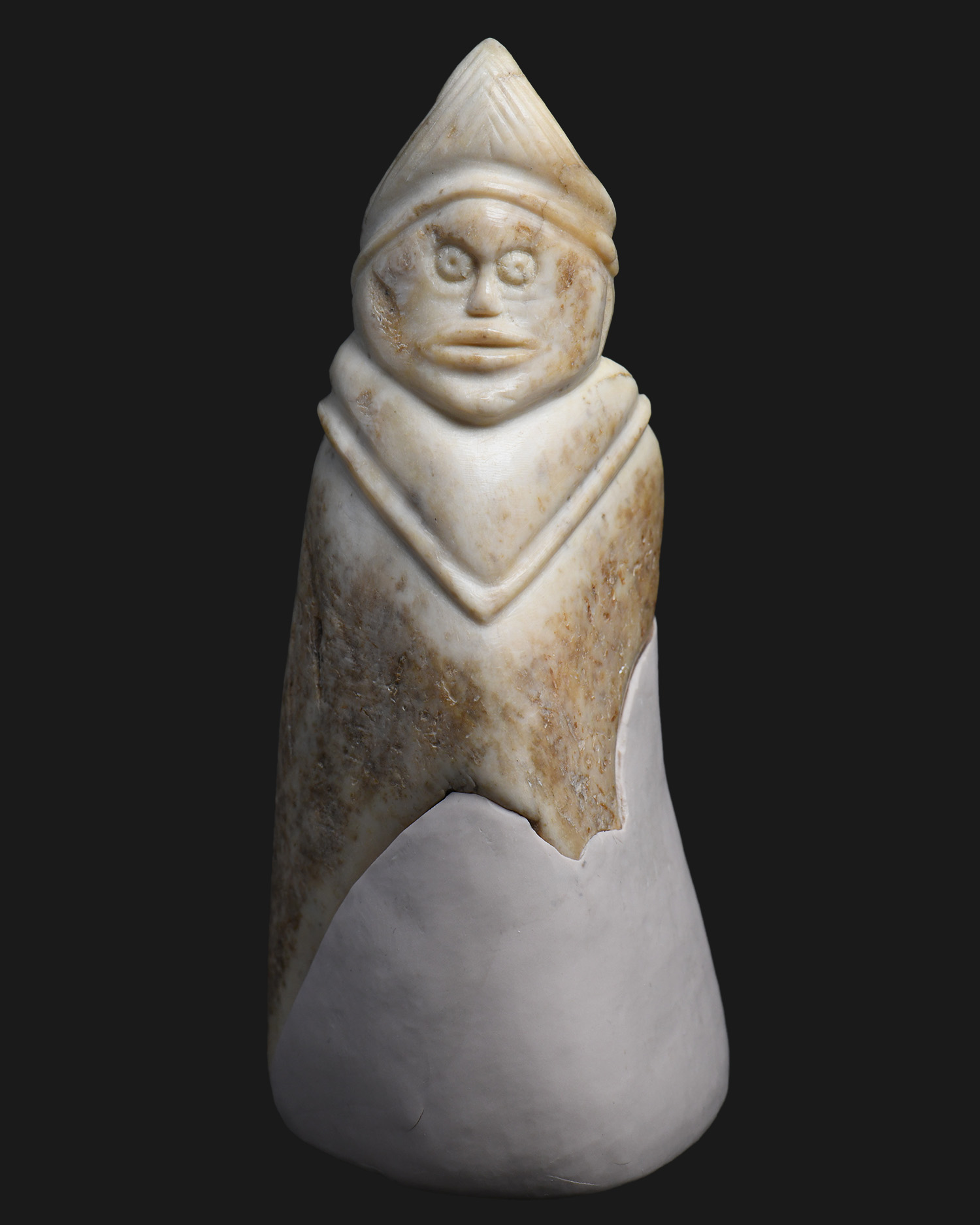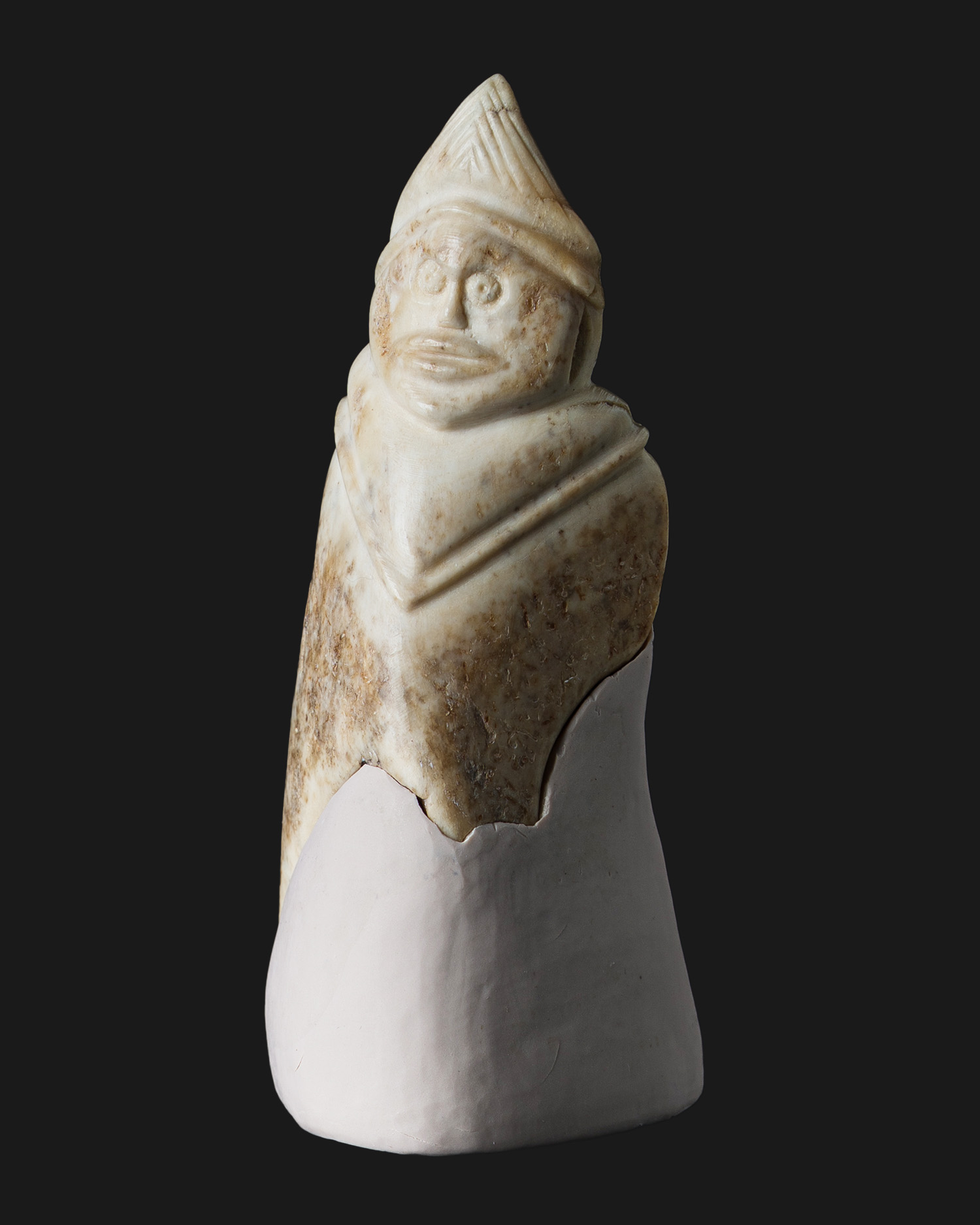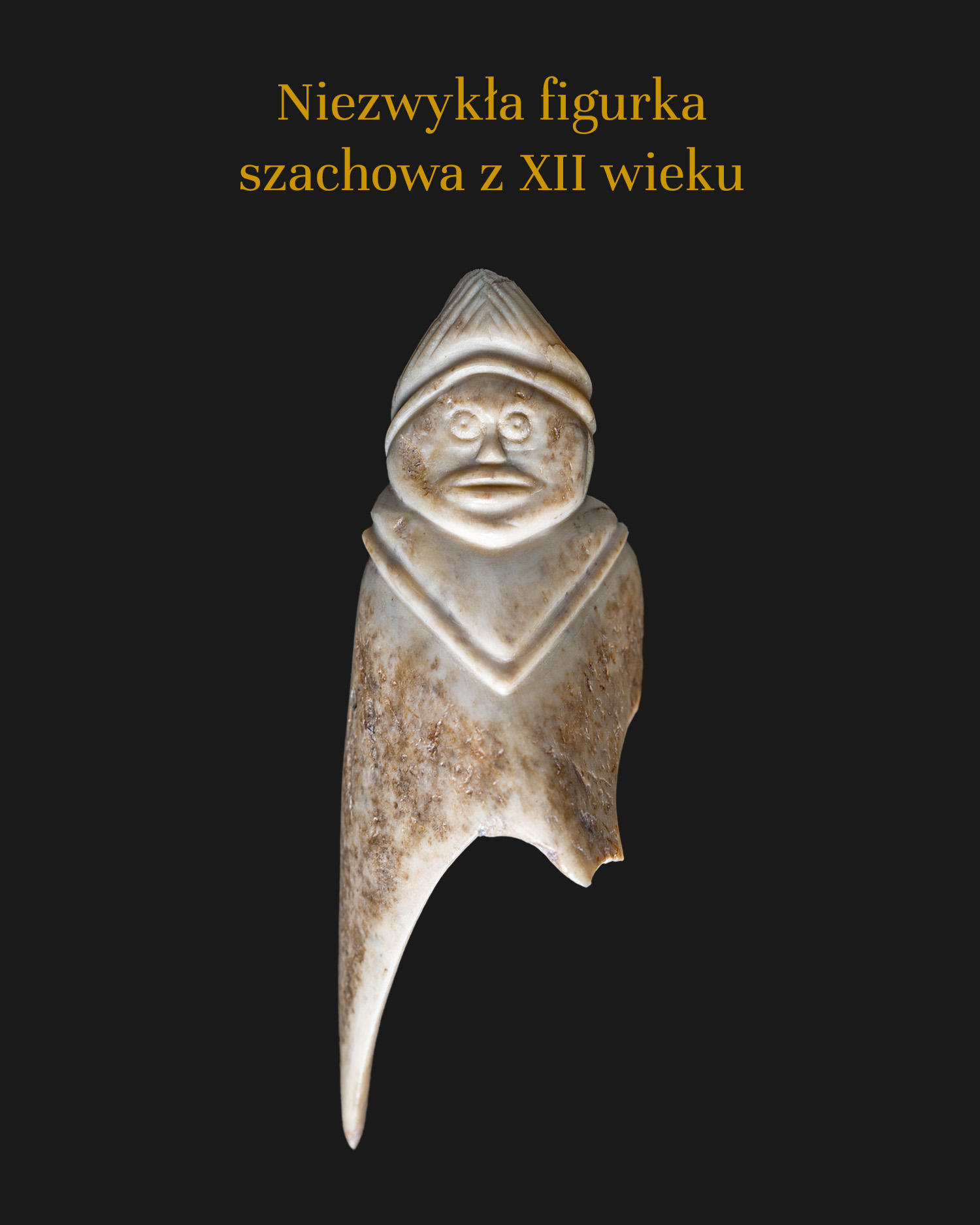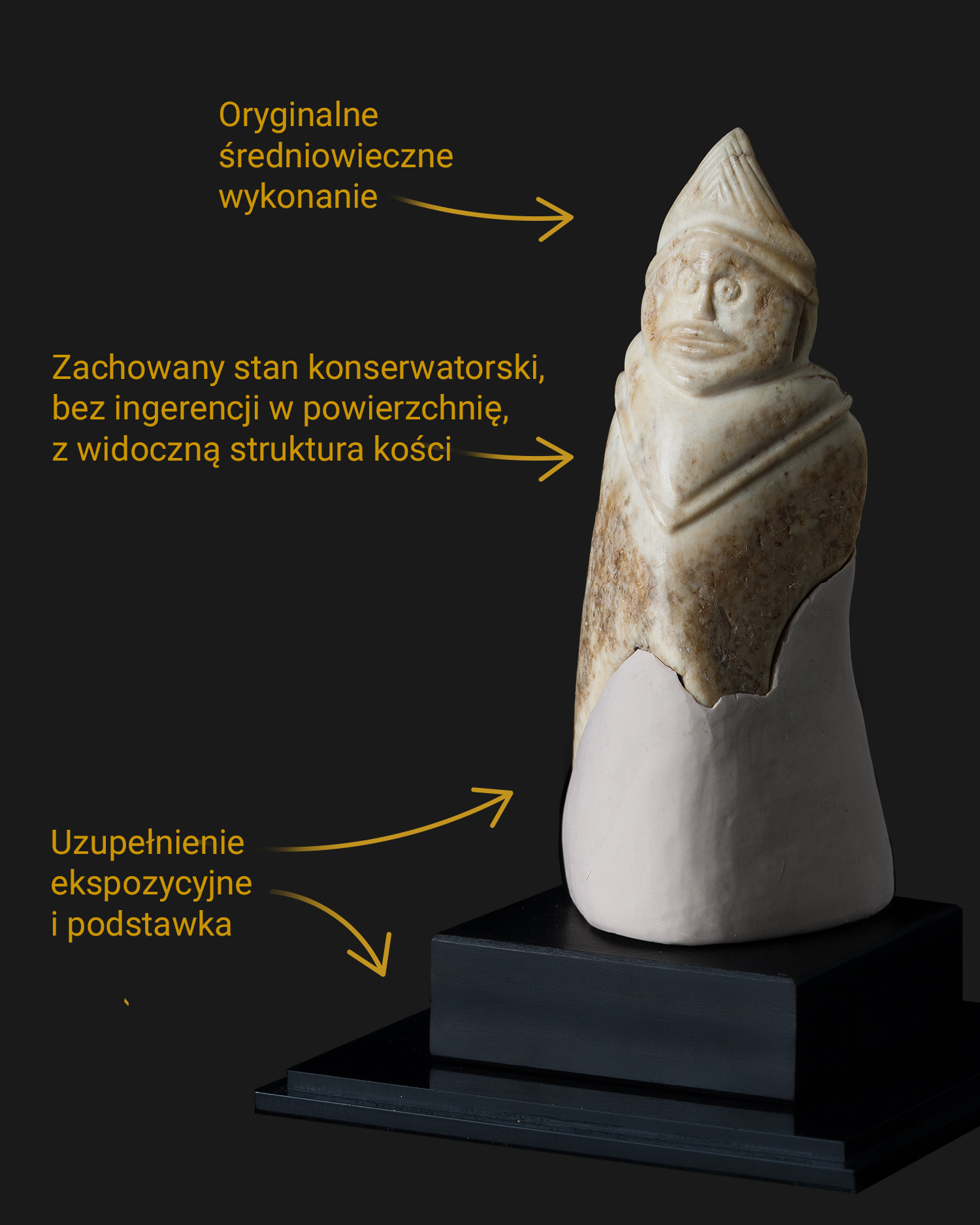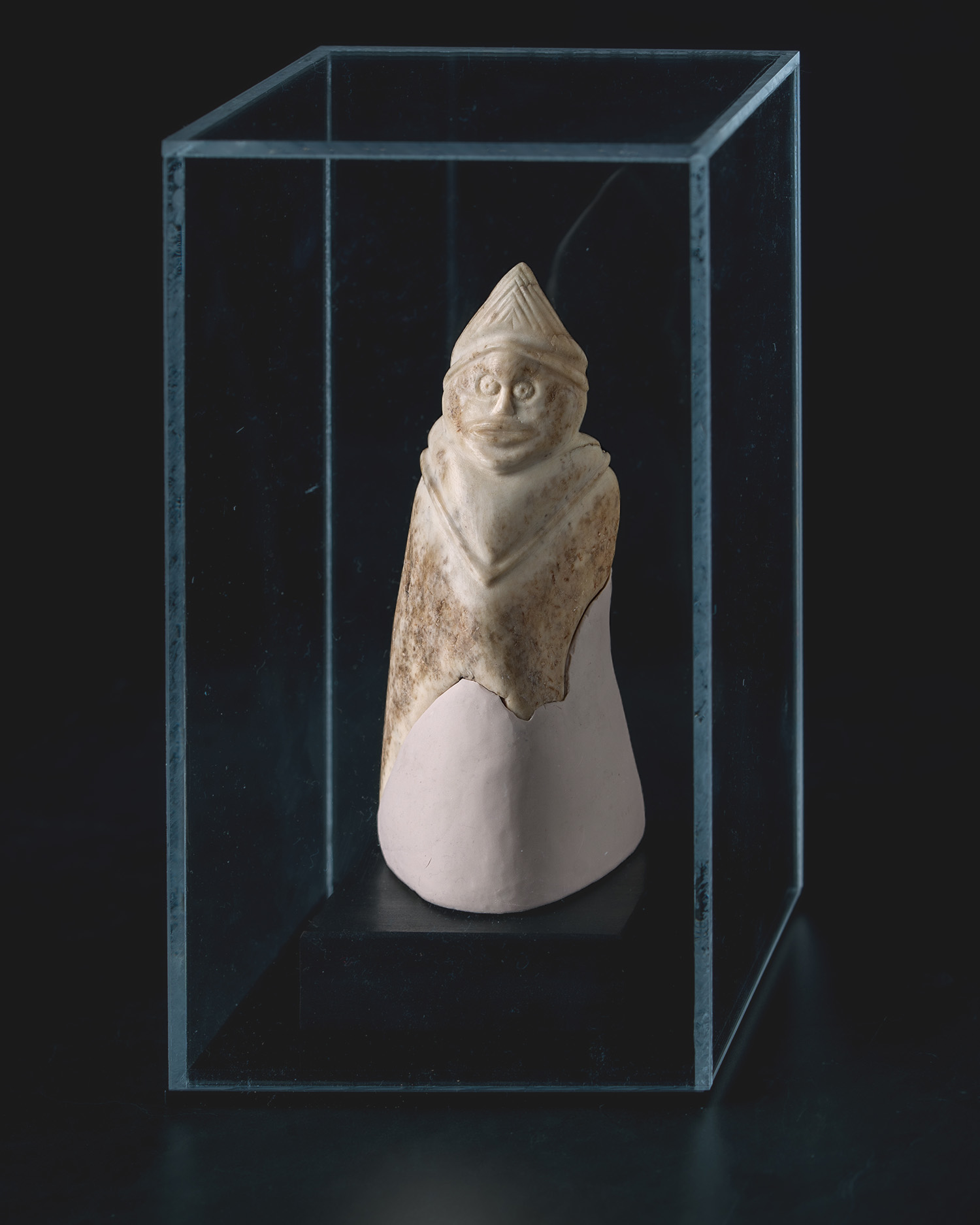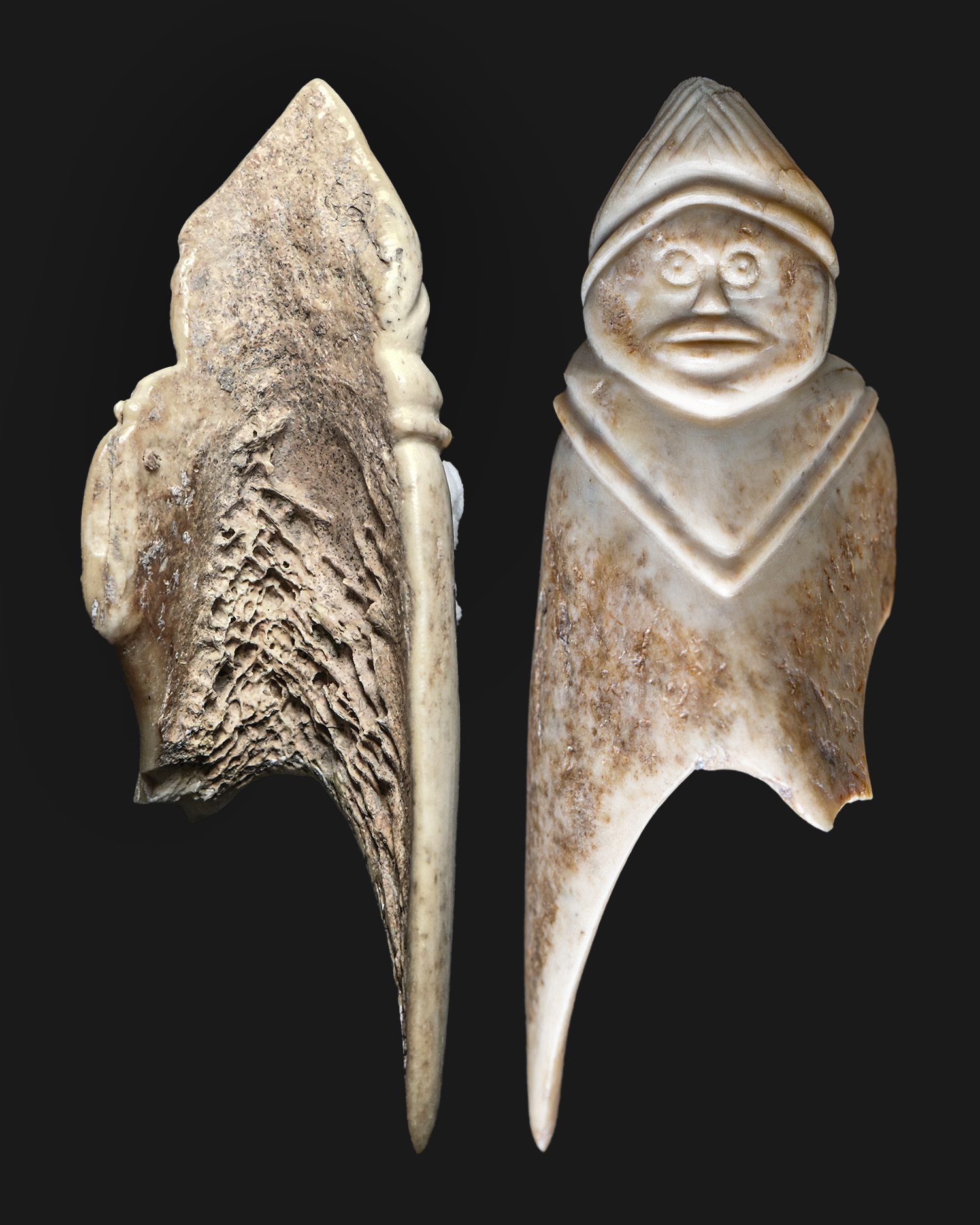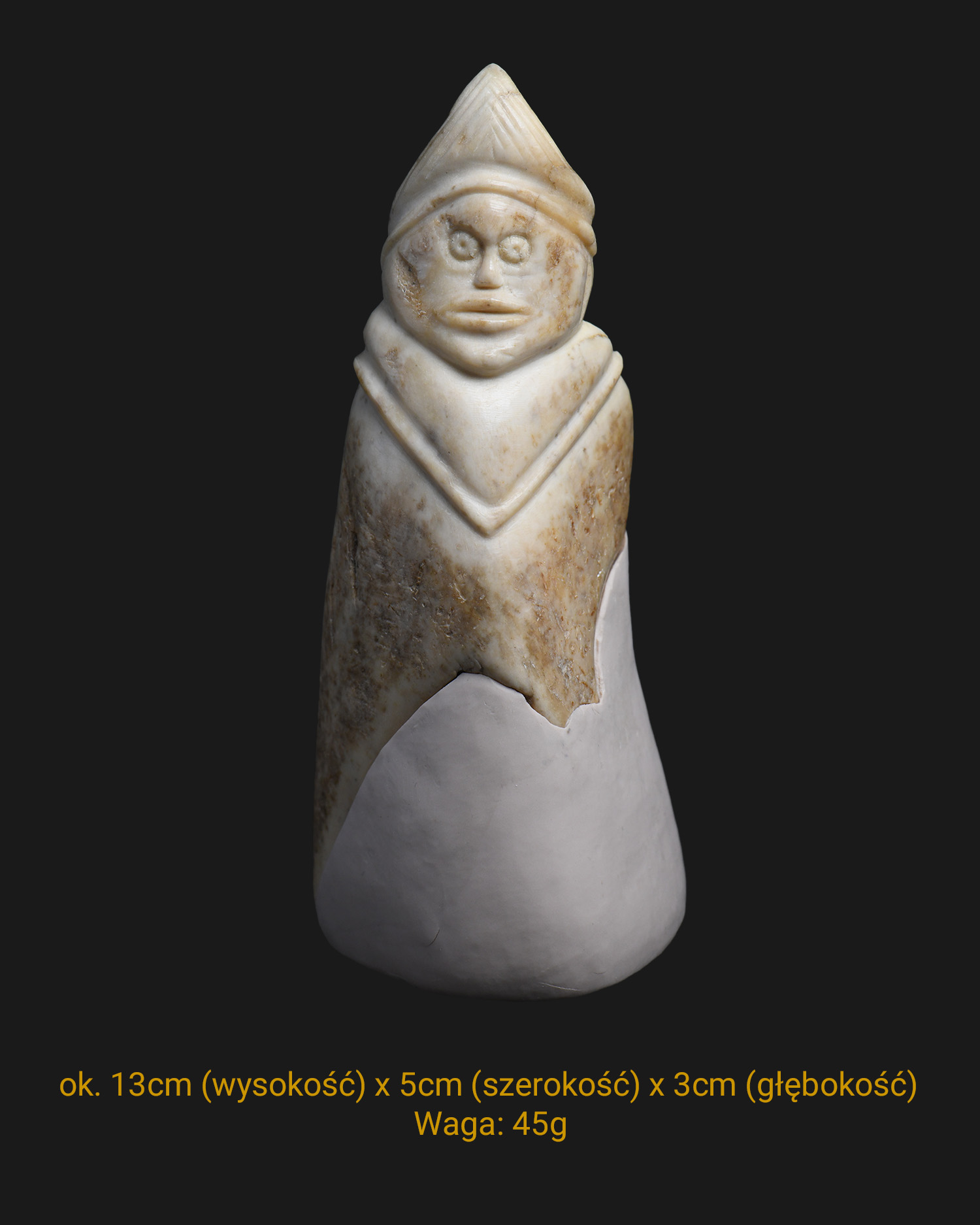Medieval chess figure (chaser), 12th century
1.900,00 €
A fragment of a medieval long bone figurine of an unspecified animal (probably a land mammal) in the form of a semi-plastic human figure. The head covered with a mitre was depicted in quite a detailed manner. On the chest there is a relief, pointed downward, which can be interpreted as an image of an ornamental belt constituting the hem of a chasuble. The lower part of the body (partially preserved) was probably entirely unornamented – smooth. At the back of the figure, the bone was heavily transformed: edges rounded, spongy structure preserved residually.
The figure is placed in a Plexiglas display on a base that is a reconstruction of its lower part.
1 in stock

Symbolism
The depiction of a human figure wearing a distinctive headdress may indicate a clerical person, probably a bishop. Figures of this type in chess games usually represented goons, although the form here is simplified and stylized in accordance with Nordic aesthetics.
Historical context
In the 12th century, chess began to gain popularity among the European elite, including the Viking culture, which integrated Christian and Byzantine influences. Chess figures were a symbol of prestige, and their manufacture from materials such as bone or walrus fang indicated the high status of the owner. An example of this type of heritage is the famous Chessmen of Lewis, whose aesthetics and function show similarities to the figurine on display.
Collector's value
Original chess figures from the 12th century are among great rarities and are sought after by both museums and private collectors. Objects of this type not only document the development of the game of chess in Europe, but also bear witness to the craftsmanship and spiritual culture of the era.
Artistic qualities
The figurine is characterized by expressive styling, geometric and narrative, which is typical of Romanesque-Nordic applied sculpture. Despite losses, the head with mitre and the relief motif on the chest remain legible and fully expressive.


Destination
It was probably part of a chess set intended for the clerical or aristocratic elite. Today, it may serve as a museum exhibit, a research object or a unique piece in a private collection.
Chess with Lewis
The best-known example of Nordic chess figures is the Chessmen of Lewis, discovered in the Hebrides in the 19th century. One of the figures, depicting a warrior biting a shield, is interpreted as a symbolic representation of a berserker, a warrior in a battle trance. They remain an inspiration to this day.
Discover a unique piece of European medieval history.
This unique medieval chess figure can become the centerpiece of your collection of historical curiosities. Get inspired by chess pieces from Lewis and join the ranks of collectors of medieval items. Also check out other sculptures and period items in our Sybaris collection.
| Weight | 0,45 kg |
|---|---|
| Dimensions | 13 × 5 × 3 cm |
| Type |
Chess figure (chaser) |
| Form |
Figure in mitre, simplified styling |
| Materiał |
Bone |
| Kolorystyka |
Beige |
| Technika |
Hand carving (chiseling) |
| Czas powstania |
12th Century (1101-1200) |
| Kraj pochodzenia |
North Sea Basin |
| Era |
The Middle Ages |
| Style |
Late Viking ,Romanesque |
| Autor |
Unknown |
| State of preservation |
Very good for age. |

